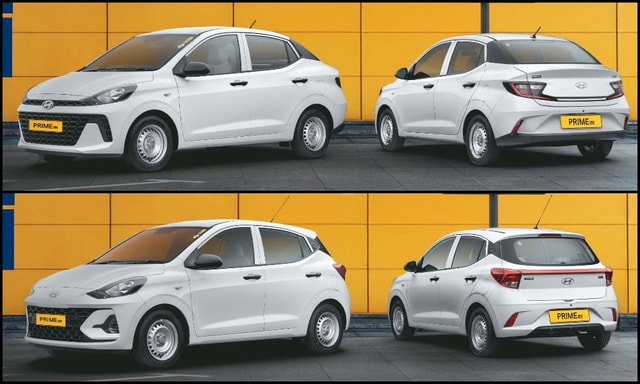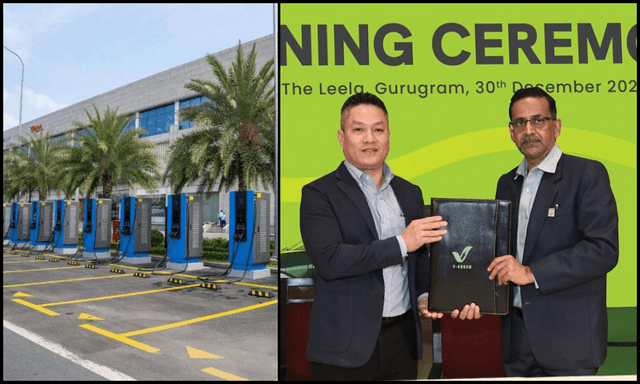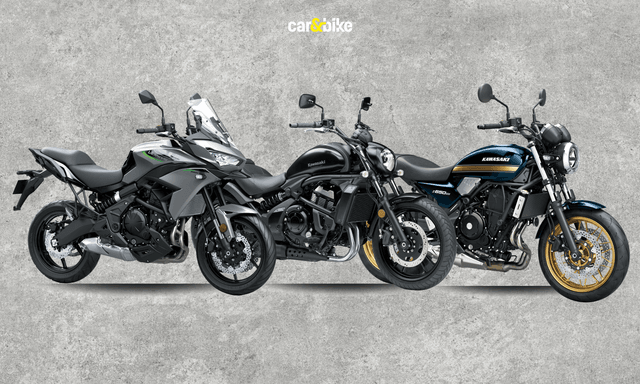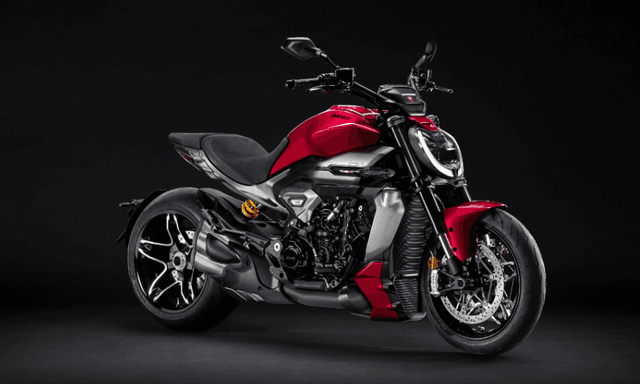Track Day Special: Celebrating Volkswagen Motorsport's 10th Year In India

- Volkswagen Motorsport has entered its tenth year in India.
- VW has played a key role in making motorsports popular in the country.
- We got a chance to drive all the VW race- and rally-prepped cars.
Nine years, yes, that is how long Volkswagen Motorsport has been in India, and it won't be an overstatement to say that the brand has played a key role in making motorsports more popular in the country. Being the only carmaker to be directly involved both in race and rally events in India, Volkswagen Motorsport has had an exciting journey, right from its inaugural One-make championship with the Polo Cup in 2010, after which it entered the Indian National Rally Championship in 2013, and now there's the latest generation Ameo Cup series. To celebrate its decade long journey, Volkswagen Motorsport India invited us to the Madras Motor Race Track (MMRT) to have some fun with all of its racing and rally cars.
 The first round included driving all the retired cup cars - Polo TDI (2010), Polo TSI (2012), and the Vento TSI (2015).
The first round included driving all the retired cup cars - Polo TDI (2010), Polo TSI (2012), and the Vento TSI (2015).Now, this was not going to be a race, we were simply going to have some fun on the tracks with all the race- and rally-prepped cars. Visually, compared to regular Volkswagen cars, these race and rally cars come with sportier body kits, race liveries, cast aluminium wheels, MRF slicks for this special track day event. The Ameo in particular also comes with a large rear wing for that additional downforce. The day was divided into three stages and the first one included driving all the retired cup cars - Polo TDI (2010), Polo TSI (2012), and the Vento TSI (2015).
 At the innaugural Polo Cup the company was racing a Polo TDI which was designed and developed in Germany.
At the innaugural Polo Cup the company was racing a Polo TDI which was designed and developed in Germany.Volkswagen Motorsport's inaugural Polo Cup saw the company race a Polo TDI that was specially designed and developed in Germany. However, the fine tuning happened in India and in fact, the initial testing of the first Polo Cup car was done right here, at MMRT. Interestingly enough, it was the first and only race car from Volkswagen Motorsport India to get a turbocharged diesel engine. The 1.6-litre TDI engine powering the Polo is tuned to churn out 127 bhp and comes mated to a 6-speed H-pattern manual gearbox. It was also the only VW cup car in India to not get anti-lock braking system (ABS). After two successful seasons, in 2012, the car's diesel engine was replaced by a 1.4-litre turbocharged petrol engine offering 177 bhp, mated to a DSG automatic transmission, along with the addition of ABS. In 2015 The Polo race car was again replaced, this time around with the Vento TSI sedan, which used the same 1.4-litre TSI engine.
 All the race cars were stripped down to the bare basics on the inside and only had the required fitments like the roll cage, race seats and the dashboard on which the controls were mounted.
All the race cars were stripped down to the bare basics on the inside and only had the required fitments like the roll cage, race seats and the dashboard on which the controls were mounted.Now, right off the bat let me tell you this was the first time that I was driving on a race track, moreover in race-prepped cars, so along with excitement there was quite a bit of apprehension as well. As it happens I got to drive the Polo TDI first. Now inside, all these race and rally cars came with a cabin that was stripped down to the bare basics, which included a roll cage, race seats for driver and front passenger, door panels, and a stripped down dashboard with a digital console and race steering wheel. It was a struggle getting my massive body inside and buckling up, but with some help from the pit crew, I was ready to drive my first ever race car.
 The most humble Polo TDI had no ABS and the chances of locking the wheels while cornering were high.
The most humble Polo TDI had no ABS and the chances of locking the wheels while cornering were high.As I pulled off the pit lane, I could feel the strong vibrations created by the turbo diesel rattling the exposed metal. Now, this was the race car with no ABS, which meant I had to be extra careful while braking, despite the fact that this was the least powerful among all the cars present here. Now, the instructor was driving right in front of us so all we had to do was follow him and take the same lines that he did. The car had enough power and torque to keep things exciting and I finished the first lap quite nicely. That said, during the second one, I did manage to fishtail the car while coming out of a fairly tight corner but it was nothing too extreme and it was quite fun wrestling with the wheel of this one.
The next car that I got into was the Vento TSI, and this time around I thought it would be much simpler considering the car came with a 7-speed automatic DSG unit and also had ABS. Sadly, I failed to factor in the additional 50+ bhp produced by the TSI engine, seeping in at as low as 3500 rpm. The boost in power was very much evident, and while I did manage to complete the first lap without any problem, during my second lap, I braked hard while taking a corner, which you are not supposed to do, and was a bit too harsh on gas while coming out of it too. The next thing I know, I went off the track and spun the car while coming back in and stopped in the middle of the track. With my heart in my mouth, I completed the remaining lap, slow and steady, and entered to pit lane. So yes, I had quite literally, taken the Vento out for a spin.  The Polo TSI came with paddle shifters which gave it an edge over the Vento TSI on the track as it was easier to use them for engine braking while cornering.
The Polo TSI came with paddle shifters which gave it an edge over the Vento TSI on the track as it was easier to use them for engine braking while cornering.
The only difference between the Polo TSI and the Vento TSI was that the former came with paddle-shifters. By the time I got on the track with the Polo TSI, I had gotten a fair idea about the track and the cars. Considering the Polo TSI came with paddle-shifters meant that I was able to use engine braking to my advantage. However, with the Vento stunt still fresh in my mind I decided to take this one a bit slow and complete the lap without any fuss. In fact, the small size of the Polo certainly made it more fun and the power and torque delivery was also not as aggressive as the Vento.
 The second stage included driving the Ameo Cup car, along with TC4-A Vento race cars, both the ITC as well as the Track Day car
The second stage included driving the Ameo Cup car, along with TC4-A Vento race cars, both the ITC as well as the Track Day carThe second stage was driving the current generation race cars, which included the Ameo Cup car, along with TC4-A Vento race cars, both the ITC as well as the Track Day car. In fact, these cars also available for purchase to regular customers. While all three cars are powered by a 1.8-litre TSI engine, replacing the older 1.4 TSI motor, all three came with different power outputs and have completely different characteristics. The Ameo, for starters, is designed and developed completely in-house at the company's Chakan facility, and the engine churns out about 202 bhp and comes mated to a 6-speed sequential gearbox with paddle-shifters. As for the Volkswagen Vento ITC, it's tuned to churn out 212 bhp and a peak torque of 350 Nm. This one comes paired with a 6-speed sequential gearbox with racing gearbox and racing clutch with limited slip differential. The Vento Track Day car, unlike the Vento ITC, does not come with a restrictor plate and it not restricted to racing regulations, and it thus belts out the maximum amount of power from the 1.8-litre turbocharged engine, which is about 237 bhp. However, the motor develops the same 350 Nm of peak torque, and while this too comes with the same sequential gearbox as the ITC car, the one we drove came with paddle-shifters instead of a racing gear lever. As it turns out I choose this beast to kick-off the second stage of the track day.
 The Vento Track Day comes with a heavy clutch and you have to gas it enough as you pick up at first gear or the car will stall.
The Vento Track Day comes with a heavy clutch and you have to gas it enough as you pick up at first gear or the car will stall.These newer race cars had a more race-spec dashboard with multiple buttons and control, like - ignition, start button, hazard lights, headlamps and much more. The new cars also came with a racing spec digital display for the instrument console from MoTec that comes with readouts for gear position, speed, lap timer, tachometer, oil pressure, water temperature, and F1 car-like LED shift indicator too. So, as soon as I hit the ignition button I was welcomed by the throaty sound of the free flow exhaust. Now, the Vento Track Day comes with a heavy clutch, yes it gets a clutch, and that means if you don't gas it enough as you pick up at first gear the car will stall. And me, with my heavy foot, surely managed to do it more than once. However, as it's a sequential gearbox the clutch needs to be pressed only for the first gear and once on the move you can work around by only using the paddle-shifters.
 The Vento Track Day car comes with a very aggressive torque delivery, which means there was no room for mistakes.
The Vento Track Day car comes with a very aggressive torque delivery, which means there was no room for mistakes.The Vento Track Day car comes with a very aggressive torque delivery, which means there was no room for mistakes, like what happened with the Vento Cup Car. Keeping that in mind I decided to go slow and steady with early braking, mild and adequate throttle input, and shifting before the metre hits the redline. Despite playing it safe, the massive power and torque produced by the engine were pretty apparent, even from as low as 3500 rpm. That said, the car was a total hoot, and I knew that with a little more track experience the car could be major fun. After completing the second lap I slowly entered the pit lane to move onto the Ameo race car next, and this one was a completely different experience.
 The Ameo offers a more linear torque delivery and is much more forgiving compared to the Vento
The Ameo offers a more linear torque delivery and is much more forgiving compared to the VentoLike the Vento, the Ameo also comes with a sequential gearbox with paddle shifters, but the car also has a lighter clutch, so it's much simpler to get the car moving, however, the biggest difference is the cut in power and torque. Furthermore, the company says that the Ameo offers a more linear torque delivery and is much more forgiving compared to the Vento, making it a suitable machine for even a novice racer or someone like me who is driving a race car for the first time. And this was evident even before I completed my first lap. The powerful turbo petrol engine is certainly aggressive enough to excite you, but the power delivery is smooth and very progressive so you always feel in control. Also, linear torque delivery means that even if you are a bit too harsh on gas while coming out of a corner, or say you brake late, the car doesn't make a fuss about it and goes as you want it to. The car also comes with a custom ECU and bunch of modern electronics, including an improved digital display for the instrument console. It was certainly the car that I liked the most out of all these race cars. Next, it was time to hop onto the Vento ITC car, but sadly, by the time my turn came the car had some mechanical problems and it was decommissioned for the day.
The stage three included driving all of Volkswagen's rally cars which included the Polo INRC 1, Polo INRC 2, and the top-spec Polo R2. All three models are Volkswagen Motorsport's latest generation rally cars which are sold to customers. The Polo INRC 2 is lowest spec model powered by a standard 1.6-litre MPI petrol engine that is tuned to belt out 133 bhp and 144 Nm of peak torque, while mated to a 5-speed H-pattern manual gearbox with a racing clutch. The Polo INRC 1 kicks things a notch higher and comes with a 1.2-litre TSI petrol engine that is tuned to churn out around 158 bhp and 210 Nm of torque and gets the same transmission setup as the INRC 2. The newest and top-spec Polo R2, on the other hand, gets the same engine and power output, but it comes mated to a 5-speed sequential racing gearbox with racing clutch along with high-performance brakes and improved suspension with 45mm more travel.
 The Volkswagen Polo INRC 2 car was the closest one here to a regular Polo.
The Volkswagen Polo INRC 2 car was the closest one here to a regular Polo.While it would have been nicer to drive the cars in their natural setting, like broken unpaved roads with gravel and mud, a race track was all we had. Not that I am complaining though. Unlike the race cars, the rally cars do not come with anti-lock brakes or ABS, which meant I had to be extra careful on the track. I kicked-off the third stage with the Volkswagen Polo INRC 2 car, and it was the closest one here to a regular Polo. The power and torque delivery were quite smooth and progressive and it lacked the eagerness that I was by now used to after driving an array of turbocharged cars. Considering these are rally cars, the taller suspension certainly changes the driving dynamics compared to a race car. So, as I moved on to the INRC 1 next, I was quite happy with the familiar grunt coming from the 1.2-litre TSI engine. The additional 25 bhp of power was also quite evident and the power delivery was also quite aggressive, but overall it was a lot of fun. Compared to it, the top-spec Polo R2 gets the same powertrain but comes with racing gearbox and racing clutch with limited slip differential. Having said that, on the race track, the Polo R2 felt very similar to the INRC 1, in terms of performance, offering the same power and torque output. Also, the taller suspension also aided in improving the handling a bit more.
 About 10-12 racers every year have entered motorsport through Volkswagen's one-make championship.
About 10-12 racers every year have entered motorsport through Volkswagen's one-make championship.After driving all these race and rally cars of different generations, it's quite clear that Volkswagen Motorsport has continuously evolved in the last nine years. The company started off with the idea of being able to develop motorsport and develop talent in India for motorsport. In fact, the company says that in these 10 years, the number of people that have entered the world of motorsport through VW's one-make championship is an average of about 10 to 12 racers every year. As for what the future holds, the company is currently focused on the next season of Ameo Cup which will again see 15 brand new drivers participating in the championship, in addition to around 10 drivers that are returning from the previous season. Furthermore, Volkswagen Motorsport also hopes that with the 1.2-litre turbocharged cars coming into rallying, the company will be at the top step more often with its customer racers. The company also aims to maximise the performance of the Vento ITC to push outright wins now.
Latest News
 Jaiveer Mehra | Dec 31, 2025Hyundai Creta Sales Cross 2 Lakh Units In CY2025Carmaker said the Creta diesel still accounts for over 40 per cent of all units sold, while the share of first time buyers stands at over 30 per cent.1 min read
Jaiveer Mehra | Dec 31, 2025Hyundai Creta Sales Cross 2 Lakh Units In CY2025Carmaker said the Creta diesel still accounts for over 40 per cent of all units sold, while the share of first time buyers stands at over 30 per cent.1 min read Carandbike Team | Dec 30, 2025Hyundai Aura, Nios-Based Prime SD & Prime HB Taxis Launched In IndiaCarmaker rebrands fleet models under the Hyundai Prime brand rather than as separate variants of its passenger car range, as it previously did with the Xcent1 min read
Carandbike Team | Dec 30, 2025Hyundai Aura, Nios-Based Prime SD & Prime HB Taxis Launched In IndiaCarmaker rebrands fleet models under the Hyundai Prime brand rather than as separate variants of its passenger car range, as it previously did with the Xcent1 min read car&bike Team | Dec 30, 2025VinFast's V-Green Partners With Hindustan Petroleum To Setup EV Charging StationsV-Green is owned by Pham Nhat Vuong, Chairman of Vingroup Corporation and founder of VinFast.1 min read
car&bike Team | Dec 30, 2025VinFast's V-Green Partners With Hindustan Petroleum To Setup EV Charging StationsV-Green is owned by Pham Nhat Vuong, Chairman of Vingroup Corporation and founder of VinFast.1 min read Jafar Rizvi | Dec 30, 20252026 Kawasaki Versys 650, Vulcan S, Z650RS Launched: Now E20 CompatibleKawasaki has updated its 650cc range of motorcycles with E20 fuel compatibility and is offering new paint schemes.1 min read
Jafar Rizvi | Dec 30, 20252026 Kawasaki Versys 650, Vulcan S, Z650RS Launched: Now E20 CompatibleKawasaki has updated its 650cc range of motorcycles with E20 fuel compatibility and is offering new paint schemes.1 min read car&bike Team | Dec 29, 2025JSW MG Motor India Extends Assured Buyback Plan To 5 YearsMG has expanded its EV buyback programme, which is also offered for commercial MG ZS EV owners.1 min read
car&bike Team | Dec 29, 2025JSW MG Motor India Extends Assured Buyback Plan To 5 YearsMG has expanded its EV buyback programme, which is also offered for commercial MG ZS EV owners.1 min read car&bike Team | Dec 29, 2025Ducati XDiavel V4 Launched In India At Rs 30.89 LakhThe XDiavel V4 sits as a cruiser in the Diavel range and will be sold alongside the standard model.2 mins read
car&bike Team | Dec 29, 2025Ducati XDiavel V4 Launched In India At Rs 30.89 LakhThe XDiavel V4 sits as a cruiser in the Diavel range and will be sold alongside the standard model.2 mins read
 Preetam Bora | Dec 30, 2025TVS Orbiter Review: Real-World Performance and Range TestedThe TVS Orbiter is a promising electric scooter promising decent range, practicality and pricing. But is there any reason to avoid it? We spent a few days getting to know it better.9 mins read
Preetam Bora | Dec 30, 2025TVS Orbiter Review: Real-World Performance and Range TestedThe TVS Orbiter is a promising electric scooter promising decent range, practicality and pricing. But is there any reason to avoid it? We spent a few days getting to know it better.9 mins read Jafar Rizvi | Dec 24, 2025MG Windsor EV 38 kWh Long-Term Report: IntroductionThe Windsor EV has joined our garage, and before it settles into daily duty, I took it out to get a sense of what living with an electric car is like.4 mins read
Jafar Rizvi | Dec 24, 2025MG Windsor EV 38 kWh Long-Term Report: IntroductionThe Windsor EV has joined our garage, and before it settles into daily duty, I took it out to get a sense of what living with an electric car is like.4 mins read Seshan Vijayraghvan | Dec 23, 20252026 Kia Seltos Review: Formula Is Spot On, But Is The Timing Right?The 2nd-gen Kia Seltos has arrived, but it has the challenge of facing strong rivals like the Victoris and Sierra. The question is simple - Does it still have what it takes?9 mins read
Seshan Vijayraghvan | Dec 23, 20252026 Kia Seltos Review: Formula Is Spot On, But Is The Timing Right?The 2nd-gen Kia Seltos has arrived, but it has the challenge of facing strong rivals like the Victoris and Sierra. The question is simple - Does it still have what it takes?9 mins read car&bike Team | Dec 26, 2025Tata Punch EV Long-Term Second Report: Highway Performance, Pros & ConsAfter a week of living with the Tata Punch EV Long Range—including a proper Mumbai-Nashik highway test—we've learned what this little electric SUV is really made of.1 min read
car&bike Team | Dec 26, 2025Tata Punch EV Long-Term Second Report: Highway Performance, Pros & ConsAfter a week of living with the Tata Punch EV Long Range—including a proper Mumbai-Nashik highway test—we've learned what this little electric SUV is really made of.1 min read Seshan Vijayraghvan | Dec 22, 20252026 Tata Harrier & Safari 1.5 Hyperion Review: By The Power Of Petrol!The new Tata Harrier and Safari petrol packs a new 1.5-litre TGDI Hyperion engine, but is it an ideal alternative to the diesel version?7 mins read
Seshan Vijayraghvan | Dec 22, 20252026 Tata Harrier & Safari 1.5 Hyperion Review: By The Power Of Petrol!The new Tata Harrier and Safari petrol packs a new 1.5-litre TGDI Hyperion engine, but is it an ideal alternative to the diesel version?7 mins read




























































































































